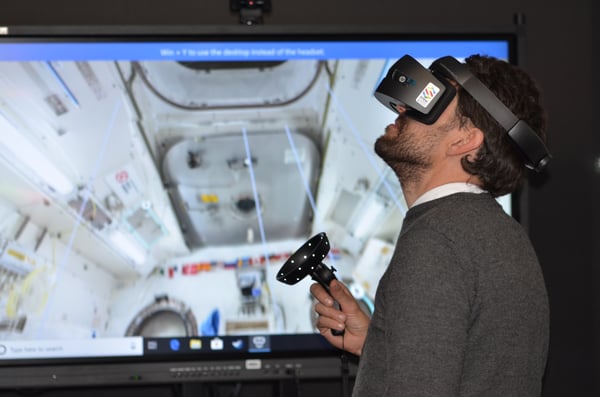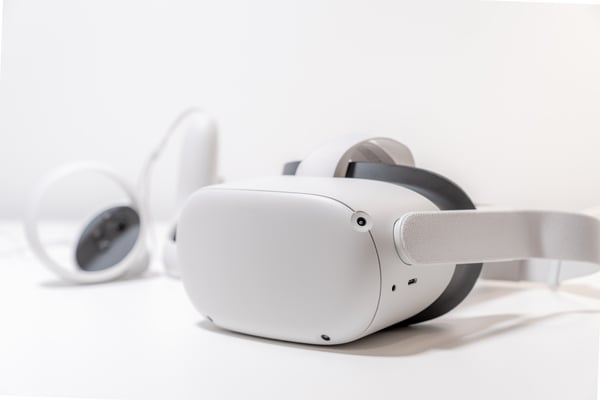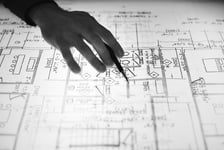Most architects have seen the power of VR - the way it immerses their clients in a ‘wow’ moment and tells a design story more completely than models and 2D plans or renderings. To get there, they have gone through some IT and design hurdles to initiate headsets, take them to their clients, show off a scene that was time-consuming to render, and get to the moment where they succeeded in surprising and delighting their clients. And they have said to themselves “well, we can’t do that every day - special projects only”.
At Yulio, we call these issues “friction” the small things that arise and make using VR less practical for use on every project. While lots of firms have had great experiences working on big projects and presenting in VR, they haven’t found a way to bring that magic to every client presentation.
That’s where practical, business-ready VR and AR technologies come in - and knowing what to look for when trying to choose the right platform. Clearing the friction with VR has been key to Yulio’s mission and we’ve learned a lot over our 1000+ hours of user testing. So let’s review the considerations your architecture practice should make in choosing a VR solution - because it should be one that helps you get more of those ‘wow’ client moments that share your full vision.
Why Use VR and AR in Architecture?
It’s important to remember that while VR and AR are digital and technical solutions, those are just features that help you present a better design story, and ultimately sell your ideas. Your chosen VR or AR solution should help you sell more, faster. When VR is applied it works to do just that. It shows clients your vision, saves you time in meetings, and results in faster decision-making and fewer change orders. It can help you catch costly mistakes before they happen and set you apart both in your use of technology and your willingness to create the kind of great client communication that builds trust. And when you choose the right solution, it returns positive ROI fast.

VR offers an unparalleled way of viewing a virtual preview of physical spaces
Choosing The Best VR and AR for Architecture
The right VR solution should help your firm:
- Share your design story in a way that sells your ideas
- Let your team create high-quality client deliverables with less training and time
- Remove the pain points that help you create, enhance and present projects
But there can be a lot of friction in the mechanics. Small, complexifying factors get in the way of the benefits of practical VR for architectural practice.
These may include design overhead, with expensive infrastructure, training, and computing power. And when you have your project ready, getting it into the hands of your clients can be immensely challenging. You may need IT to get involved to set up headsets or travel with your gear to your client’s office. And if a client decision-maker is in another location, the presentation may fall flat as they watch from a remote computer.
We’ve been tackling these barriers to practical VR for a few years, and over lots of beta testing with our early adopter clients, the pattern for making VR practical to use in all client projects has become clear. You need to clear the hurdles across 3 key phases: Creating, Enhancing, and Presenting.
Optimizing each area will make you better able to tell VR stories and generate positive ROI without the expense and time constraints of additional resources. Investigating any VR software you may want to adopt across these areas will help ensure your investment in VR returns ROI faster, across all of your projects.
Create
With some tools, creating a VR project can have a long learning curve. There may be a significant time investment required to master material models and lighting controls and the rendering solution may be quite complicated requiring some of your more senior staff to get involved. Plus, without additional automation, rendering is only the beginning. With the 360 nature of VR, design teams then have the task of stitching the pieces together - using up valuable machine time with each iteration and check.
Instead, tools like Yulio offers wide compatibility with many of the design tools being used today across multiple industries, including Revit, a program all of your team, from juniors upward have been trained with. You can create stunning VR by combining the tools of Lumion, Enscape, Revit and more with Yulio by uploading a cube map file that meets the upload requirements to Yulio to easily transform your project into VR. Using Revit as the baseline for your VR project avoids complex training, and expensive software prices - but it also means that more members of your team can be productive with VR. With the design tools you already know and Yulio, every team member can create fully immersive projects. The design time overhead is low enough that you can use them from a high-level ideation phase or a final photorealistic render, with little training.
Yulio also helps you remove the need to stitch your render together and delivers a complete, navigable project directly from the tools you use. Your scenes are linked by automatically generated navigation hotspots, and a floorplan created for your project.
When you use the tools you already know as the foundation of your practical VR for architectural products, you create a team where everyone can create compelling client deliverables with no other investment. It has the tremendous benefit of reducing overload on design team members and allowing you to leverage junior staff to create stunning, client-ready projects. Your whole team can be VR storytellers.
Enhance
Your rendered project is the biggest part of your story - but a VR solution that allows you to enhance that story with relevant assets gives you the chance to enrich your narrative to bring it more to life. It can also be an opportunity to provide relevant project details or commentary in situ. Using ancillary assets that you already have like product images, video clips, or audio that explain your design can help you create a single client deliverable with all the information in one place. These might be things like alternate product images and links, or more immersive media like ambient sound or a voice-over explaining the project. The best VR solutions for architecture are those that allow you to use the resources you have to annotate your project. Yulio allows you to combine these assets with VR experiences which helps you avoid using complex alternate authoring tools when building your client deliverables.
Check out a quick breakdown of the many enhancement features available in Yulio.
One of the most immersive enhancements available on our platform is Augmented Reality (AR). AR allows clients to bring any element from your design that you’ve tagged as an AR hotspot into the real world. It combines the best of VR and AR. While VR is great at completely immersing you, AR is great at taking elements to envision in the real world to understand their scale and integration into their surroundings. Combining them for powerful storytelling brings your presentation to the next level.
Present
Once you have invested in creating great VR experiences, you want to leverage that work to its utmost with seamless delivery to your client. That ‘last mile’ can be another point of friction, unless you choose a solution that has worked through the challenges to make it simple to share your project.
Any solution which is geometry-based will leave you not only with something that looks a little bit cartoony, but also requires some significant tech lift from the receiving machine, be it a laptop or another device. Plus, they are often sent as executables so there may be security risks.
Instead, look for something that is shared with form factors your end clients already know, like a URL that can be sent by email or text, if you plan to send the project without commentary.
Better yet, go for truly immersive full VR in a simple mobile headset. Yulio solutions allow you to present on many user-friendly headsets, including the Meta Quest 2, a current best-in-class headset available for about $600. For larger projects, you can even set up and send the headset to your client so they can view iterations of the project, ongoing. To make remote client headset management practical, you need a solution that allows you to load, arrange and replace the projects on the headset easily.

Standalone VR headsets like the Meta Quest 2 are more portable and cheaper but still offer extremely immersive experiences.
Your VR presentation software should allow clients to explore the scene themselves, or have the ability to let you guide clients through it. And because the last thing you want is to lose the magic of your design in technology, it needs to have a very low learning curve for clients to navigate once they’re in the headset. Look for features that help you know what your client is looking at, guide them in a presentation, or explore on their own. And, for those clients who may be in a remote location, you’ll want to ensure that the experience viewing on a headset or another mobile device or laptop is a first-class experience. Your VR solution should support in-person presentations, tradeshows or remote presentations whether locally, or in other geographies.
Bonus - Feedback
One of the most valuable outcomes of presenting in VR for your design team is the specific feedback that is so well contextualized - you get the opportunity to know exactly what your clients were looking at when they made comments that might otherwise feel vague like “it feels too cramped” or “is it dark in this area?” etc. Find a VR solution that lets you markup your VR scene so there’s no loss of detail from client comments back to the designer.
VR and AR in Your Architecture Workflow
When you choose a VR solution, you aren’t choosing technology - you’re choosing a tool to help you win clients through storytelling and emotional engagement, and a way to distinguish your practice from competitors. You need it to generate positive ROI fast and be productive for your team - and not a burden on time and infrastructure. The best way to ensure your success is to investigate what you need across creating and presenting your story and make sure your tools are there to support you. When you find the right match, you’ll find that your projects will improve client engagement, and ROI and make your team and practice more profitable. The power of VR to disrupt architectural presentations is all inside its ability to show us a vision of something that doesn’t yet exist.
Yulio takes all of the authoring and presentation mechanics and IT friction and makes it all go away so you can get to that joyful client moment faster. Check it out for free at yulio.com/pricing where you can sign up for a free trial.





.jpg?width=245&height=150&name=yulio_virtual_reality_architecture%20(1).jpg)
